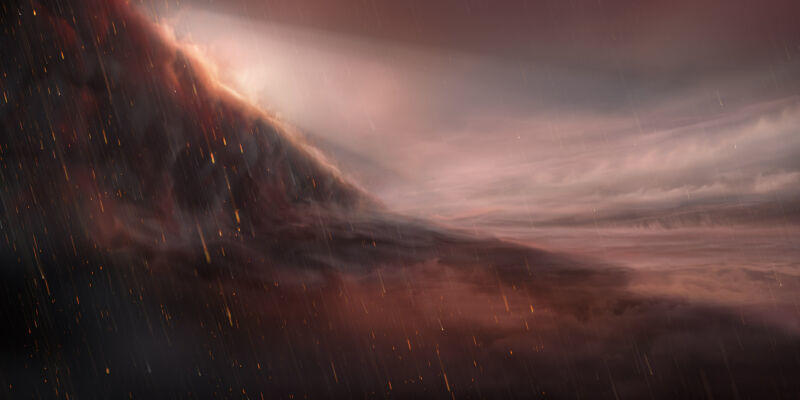Earth is a very special planet. It is the only planet in our solar system that can inhabit intelligent life. That alone makes it an incredibly interesting planet, but in reality, every planet has its own interesting quality or quirk worth studying. You may not want to live on these planets, but that's perfectly fine.
Depending on what the planet is made out of, and also how close or far it is from the sun, some very interesting things can happen. Mars is incredibly hot and gaseous, while a planet like Pluto is almost entirely ice. Those aren't even the most interesting examples of the diversity in planets!
The planet Earth can rain water, which can be a nuisance at times, but can also be very enjoyable. Now imagine if our planet rained iron pellets. How would that make you feel? A new planet that astronomers are studying does exactly that, rain iron. Read on to find out about this strange planet.

The easiest exoplanets to discover are the ones that orbit closest to their stars. This is because they can easily be detected by their gravitational pull or the amount of light that is obscured by them. Now that we have different ways to discover exoplanets, it is much easier to find new ones outside of our solar system. We can detect exoplanets via their atmosphere, making gas giants easier to detect since their atmospheres are massive. That's what has brought researchers to a new exoplanet with a peculiar quality: it rains liquid iron.

You might be wondering how we know that this planet, light years away, rains liquid iron? When the planet crosses between Earth and a star, the light transmits data to us, based on how it passes through the planet and its atmosphere.
The planet we are talking about is called WASP-76b, and is very similar to Jupiter in terms of mass, though it has a radius that is twice the size of Jupiter. It has a surface temperature of 1,890 degrees celsius, so don't plan on visiting there any time soon. It is incredibly close to its nearest star, which is why it's so hot, and also why we can detect it so easily. By being so close to a star, the light imaging comes in much clearer than if it were farther away.

Researchers have detected the planet using an instrument called ESPRESSO (Echelle Spectrograph for Rocky Exoplanets and Stable Spectroscopic Observations). At first researchers found iron atoms via their imaging, but by looking closer they were able to determine that the planet was literally raining hot iron.
During the “day time,” when the side of the planet is closest to the star, the star will destroy most of the iron rain. That means that when night falls and the side of the planet is further from the star, the iron concentrates and turns into iron rain. The push and pull of hot and cold keeps the iron rain in a liquid state. The one major difference between this type of iron rain and the rain we're used to on Earth is that it never reaches the ground since there is no ground for a gas giant planet. It simply vaporizes after falling for some time.

This is a bigger deal than it seems simply because just a few years ago we would have never been able to discover something as specific as this.